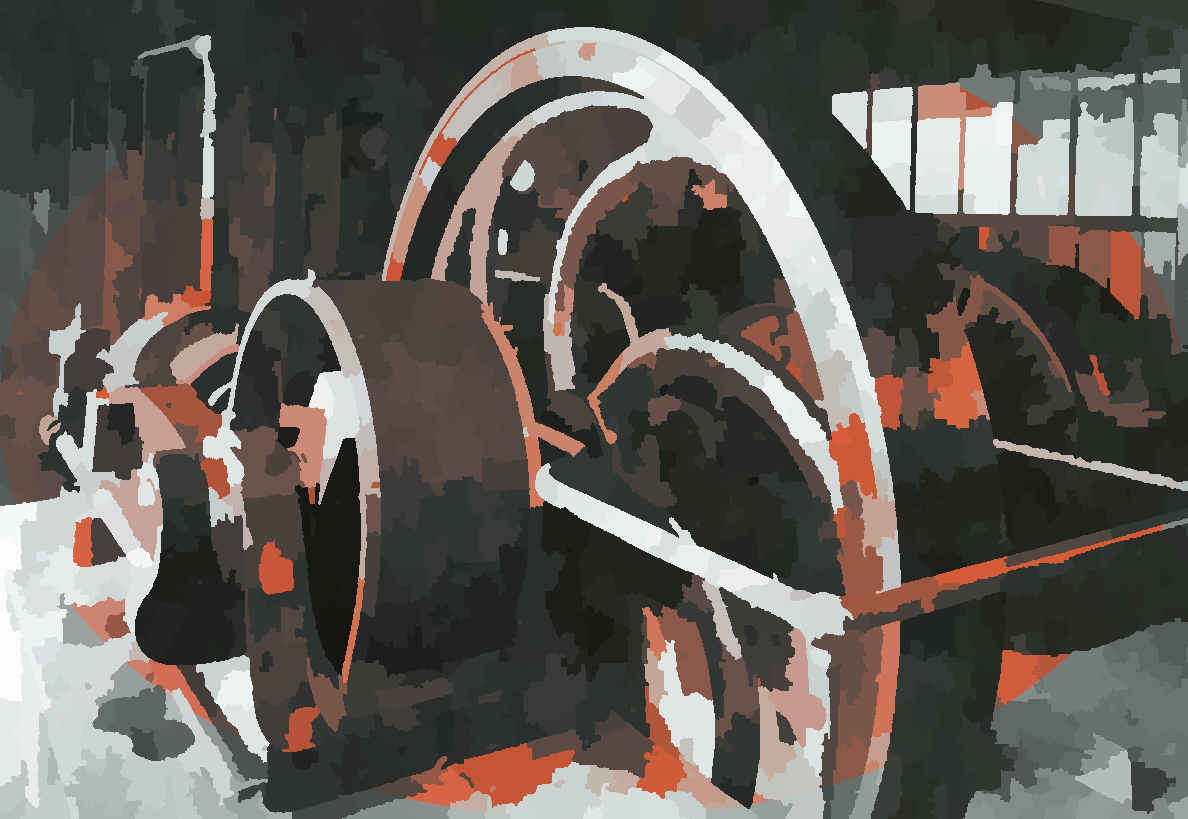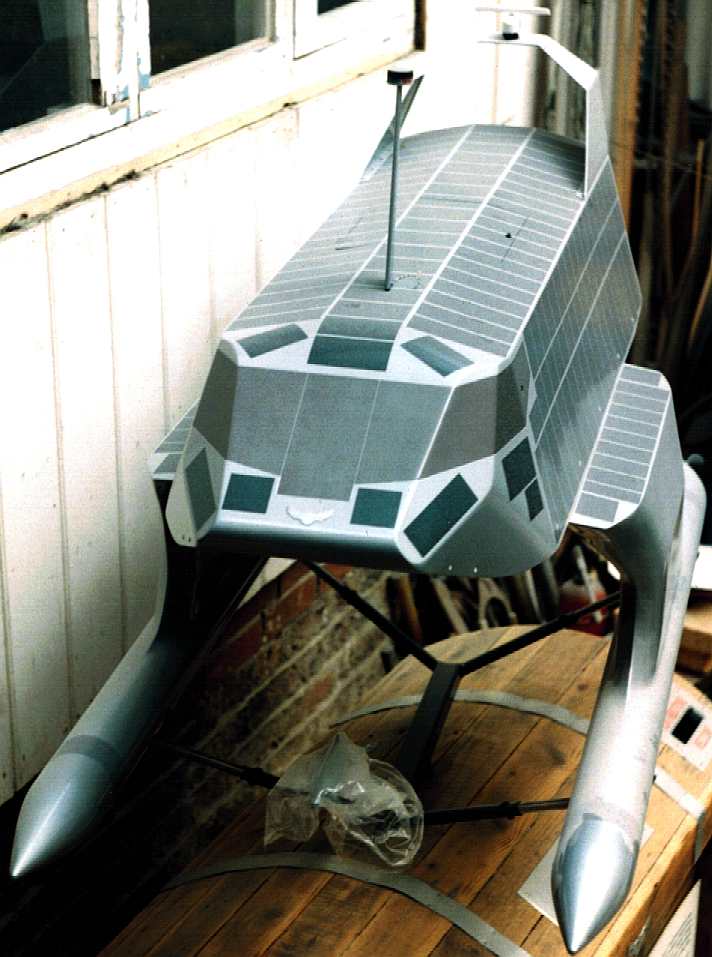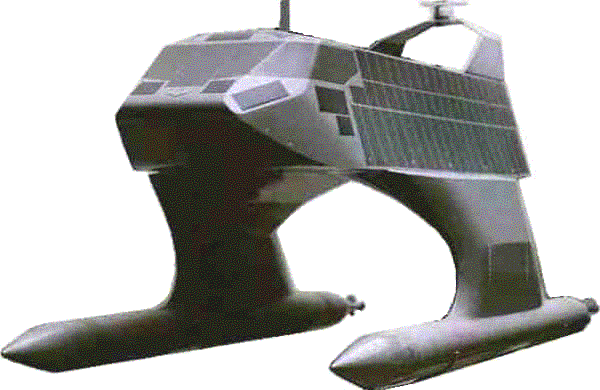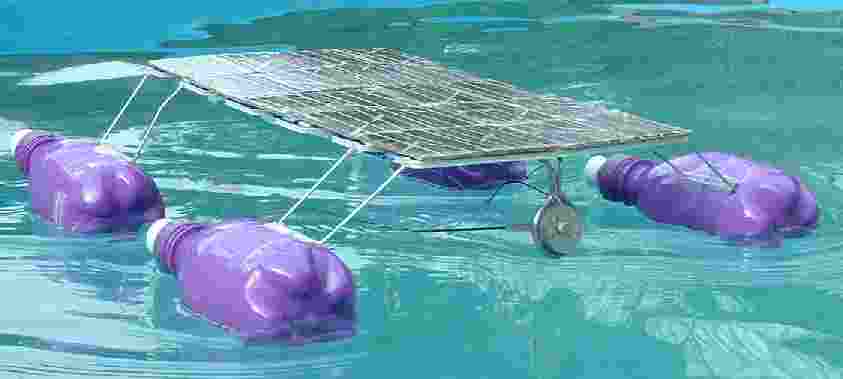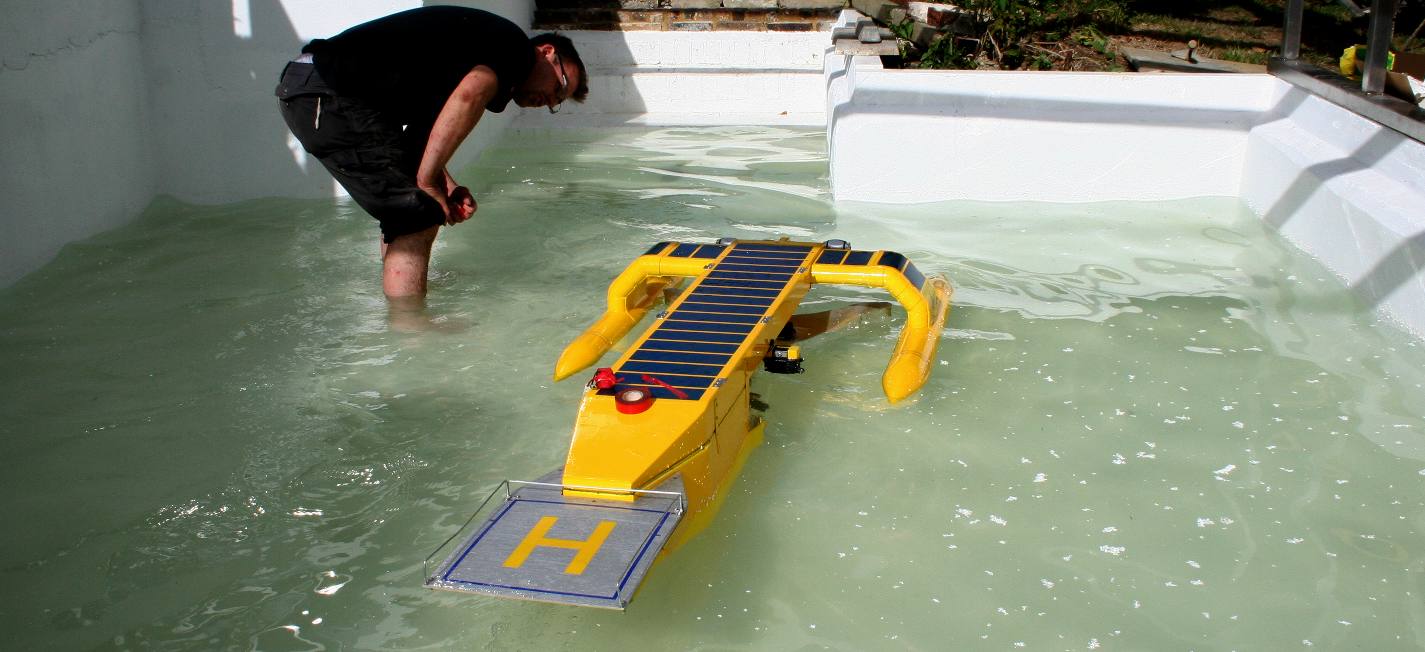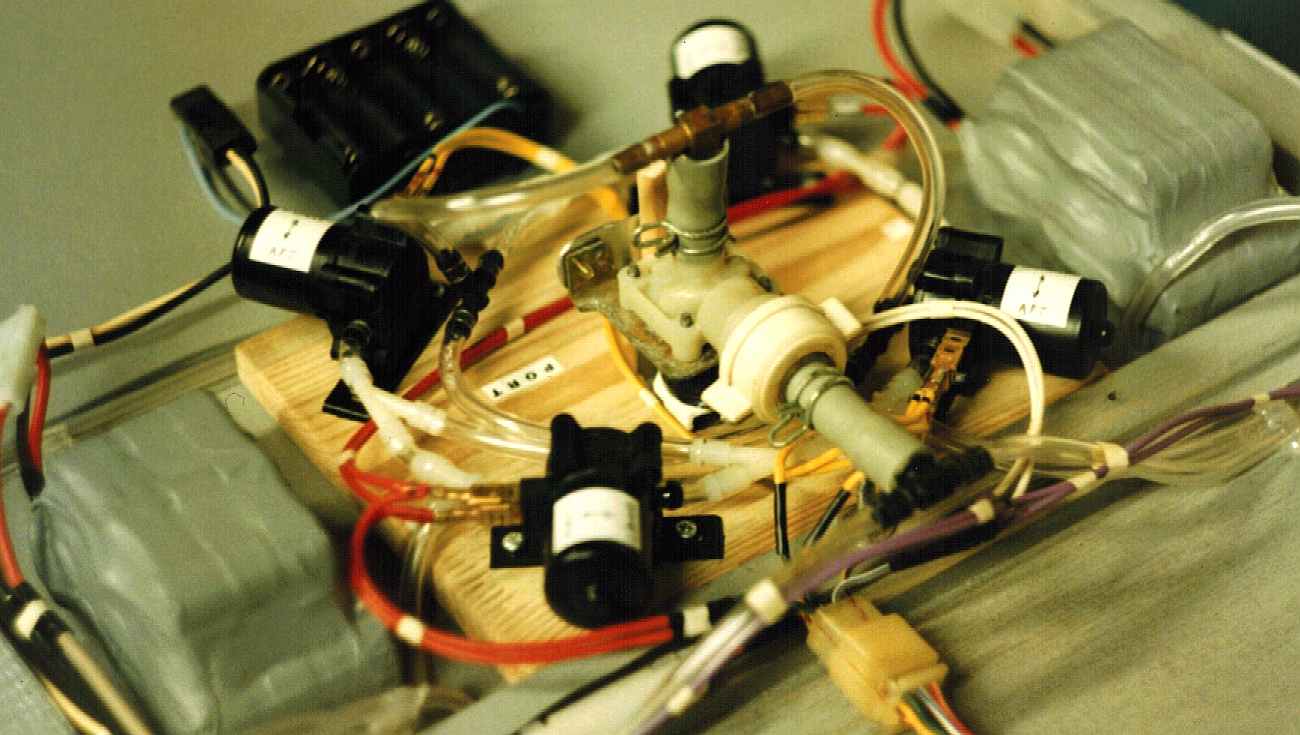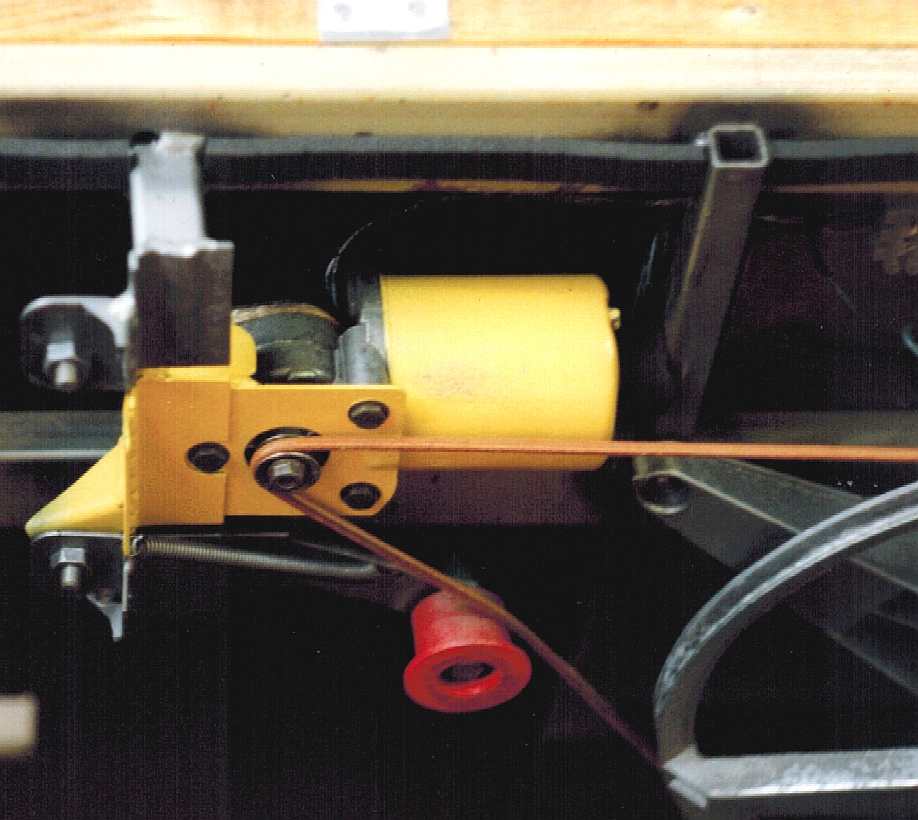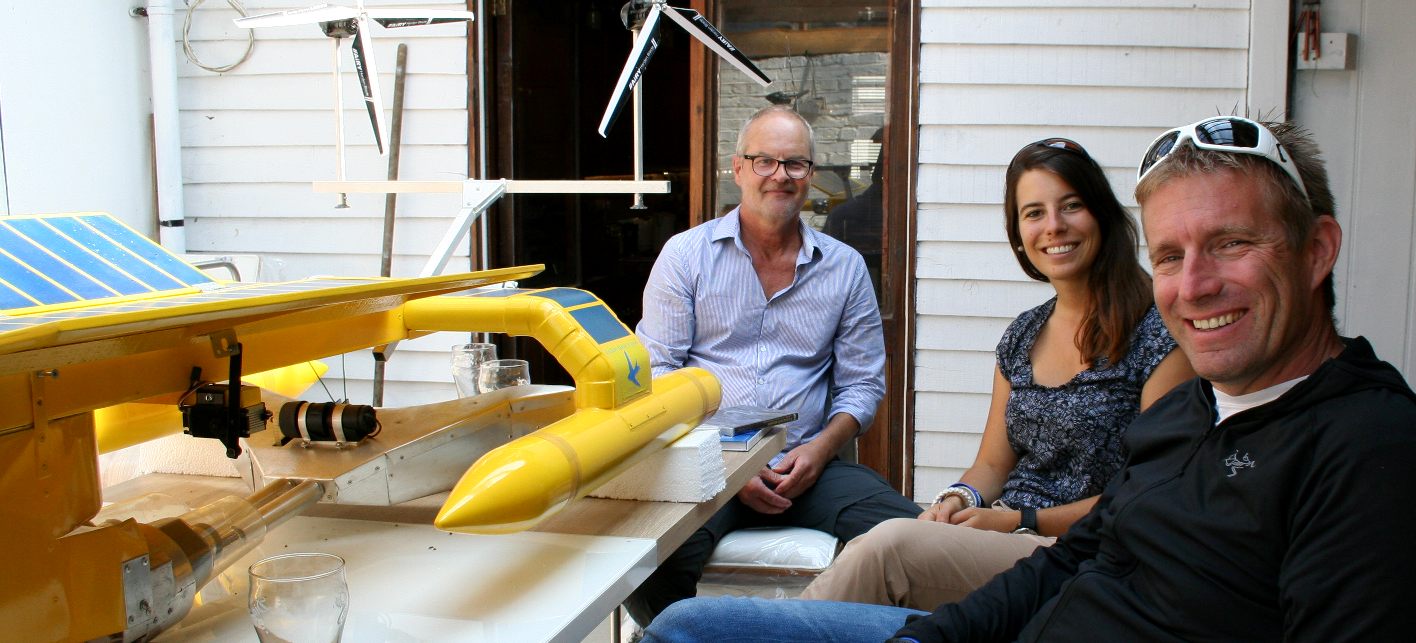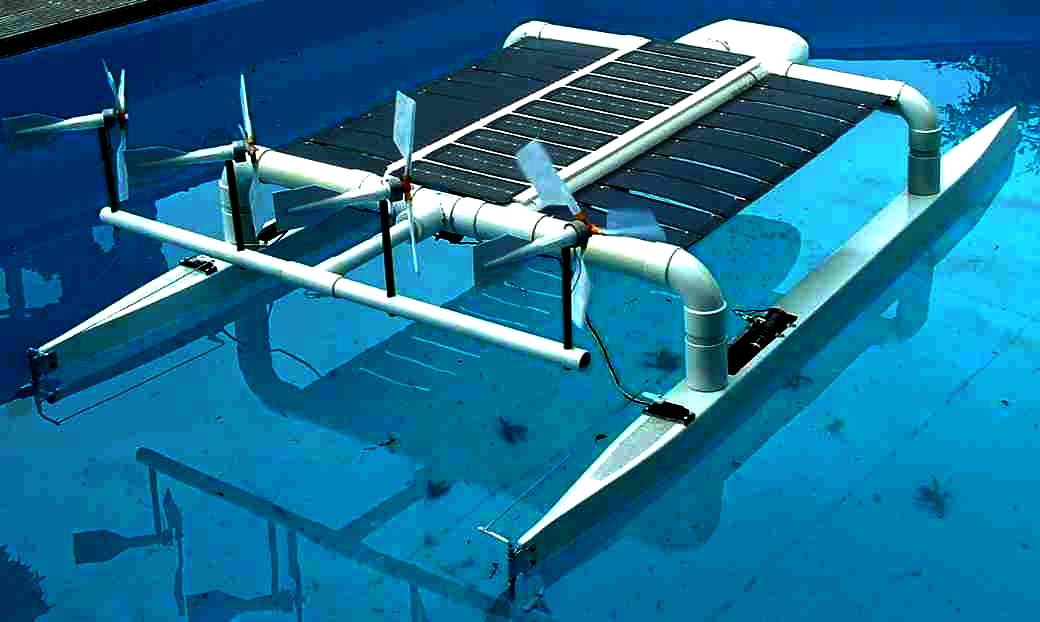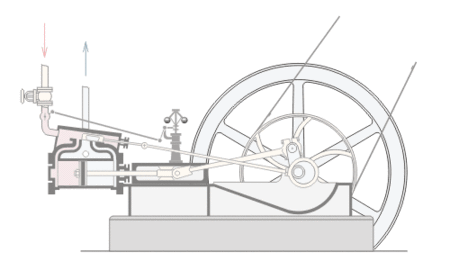|
SWATH & SOLAR CATAMARANS |
EXHIBITS |
|||
|
EXHIBITS FRIENDS HERITAGE HOME LIME PARK OPEN DAYS PARKING TECHNOLOGY |
||||
MKI - TO BE RELOCATED - This was the advanced SWATH 1:10 scale model, seen in the workshop many years ago. The first ship in the world to be designed specifically to circumnavigate the globe using only solar power, and prove the concept, that shipping can be totally clean, or zero emission. No need for diesel, or heavy bunker oils. But, would it work? Note: the wooden treasure chest, that the large model is sitting on.
These proof of concept models are not in any way connected with the generating history of Herstmonceux Museum, except for being designed and built in the workshops in Lime Park. The first of which was conceived in 1991, and exhibited at Earls Court in London at the 1994-1995 Boat Show, is seen above. Working, proof of concept models like this take a lot of time to design, build and test. And can cost quite a bit to make and develop. They represent a considerable investment in technology and know how. They are also part of the history of solar powered shipping, and as such, heritage assets: for Solar Archaeologists. Solar archaeology is the study of the development of solar energy by mankind, in the race to find sustainable climate friendly solutions.
BUDGET EXPERIMENT - This is a very simple test rig that took just a few minutes to make by bending some ally welding wire, and hot gluing to four empty soda-pop bottles. And it worked amazingly well. Though no controls of any sort. Just point and go. Great for children (and teachers), who want to try it for themselves, for under £10. And are in a hurry.
There followed two more conventional catamaran designs. The last of which had four wind turbines, that changed angle and revolved to face into the prevailing wind, while solar wings with PV panels, could also change their angle of incidence, to face the sun. All of these models were radio controlled, with good performances, and incremental hull speed increases.
SEAVAX - This famous ocean plastic cleaning concept, owes quite a bit to the original SolarNavigator designs. Though not intended for speed. This is more of a workhorse, or as one visitor to an exhibition stand in Hastings said: It's an "ocean going dustbin." We liked that description.
The SolarNavigator series of boats, in part, inspired Raphael Domjan to build the Turanor PlanetSolar, the Swiss ship that set the first sun powered circumnavigation record in May of 2012, with the generous backing of Immo Stroeher..
Historically speaking, the first and original world record contender, was a SWATH design of just 50 feet in length. SWATH stands for: Small Waterplane Area Twin Hull. What that means is that the vessel has two hulls like a catamaran, but that the hulls are submerged, like two submarines running side by side, underwater.
[LEFT] R/C Servo switching forward-off-reverse for the four pumps seen on the [RIGHT] The hull had four water tanks, that could be flooded and drained, to control ride height and pitch. All of these controls were built into the superstructure of the MKI SolarNavigator.
You may think that such a design is quite complex, and way more expensive to build than a boat that just floats on top of the waves. And you'd be right. So why go to all those lengths?
The answer, was (then) to reduce hull resistance and wave drag. At least that was the theory. Twin submerged hulls means the vessel is not subject to motoring up, and then riding down the crests of large waves. Allowing a smaller ship to cut through the water while remaining horizontal, rather than bob up and down, which wastes a lot of energy. And on a solar powered ship, there is a limited amount of energy to play with. Although the design was well received in naval architect offices, with the offer of build by a well known MOD supplier. It was not proceeded with, simply because it would have been cheaper to use longer surface hulls, giving an improved hull: speed-length-ratio.
TREASURE CHEST - Old old steel framed office desk, was converted into a treasure chest display, with built in motor drive, so that the model slowly turned at exhibitions. You can just make out a circle of micro-switches around the central spindle. These switches were controlled by a camshaft to illuminated a large map of the world. So that visitors could see the route of the proposed world navigation challenge. When you look at some of the exhibits on display at the Museum, the intricacies of the vehicles will not be immediately obvious.
The SWATH design could alter the ride height of the model, and attitude. Just like a submarine. The hulls could be made to glide underwater at variable depth, to counter wave height and sea state. This was achieved with a series of pumps, using two radio control sets and three servos. While speed and direction was achieved using variable track mixers, and two variable speed controllers. There were no rudders. Being unnecessary, and causing extra drag. Though many sailors do not like that idea. Should one hull motor fail, there would be no steerage.
The second in the series of SolarNavigator ships, was almost twice the hull length, a surface catamaran with solar panels over the helm, that was quite unconventionally, slung underneath the array of solar panels. But at least there was an open deck to the rear, for sailors who like to feel the sea breeze.
Having longer hulls, tends to reduce the wave drag, and cresting/diving, as in smaller boats. Using ordinary surface hulls, makes a build considerably more economical. Also, the load carrying capacity is not so finely tuned, with better reserve buoyancy. Good news when overloading, as happens from time to time.
SOLAR PIONEERS - Stephane Chopard & Raphaelle Javet (communications) and Raphael Domjan (pilot) on a visit to Herstmonceux Museum in August 2017. Raphael's Turanor PlanetSolar project set the benchmark when it comes to solar powered zero carbon transport.
Then somebody had the bright idea to hang wind turbines off the back of a vessel. To turn the vessel into what is known as a rotary sailing craft. Where the wind turbines act like revolving sails. A bit like a windmill on water.
The third ship in the series, was also a catamaran. This time with the command cabin enclosed at the front, and four wind turbines hung off the rear frame, to add to the electrical power generated by the solar wing panels. The idea being to capture the thrust from equatorial and gulf streams, and converting to forward motion via electric drives. A later study revealed that the extra mass might be better spent, adding more solar panels. But, to date this is still open to conjecture. This design featured rudders.
MKIII - A very much simpler catamaran design. Now with wind turbines as a complication. It was though faster than the SWATH design. The fastest design is yet to come. It is a virtual, stabilized monohull. A stabilized monohull is basically a trimaran, with shorter outriggers, than conventional trimaran hulls. The design is due to be aired in late 2023, or early 2024 at venues yet to be disclosed. The latest guise, or MKIV, is still in the workshop as of August 2023.
There are several innovative vehicles and vessels on permanent display at Herstmonceux Museum, including:
1. Art Gallery - Collection of paintings, pictures, graphics, sculptures, wooden carvings & exotic glassware 2. Archives - Historic documents library, patents, trademarks, copyright, films, catalogued legal papers & letters 3. An Edwardian ice well, throwback to the days before refrigeration 4. A large underground (condensation/cooling) and water storage chamber for ice making 5. The world's smallest water basin, test tank for model boats & ships to 1:20 scale 6. World's smallest wind tunnel, vehicle drag measuring instrument using electronic strain-gauges 7. Three PV boat models, Navigator, SWATH & 2 cats + route map prior to Swiss PlanetSolar 8. Seavax, the ocean cleanup proof of concept prototype from 2016 - Hall of Plastic, ocean waste, marine litter Vs fish 2050 9. AmphiMax, radio controlled (working) beach launching & recovery vehicle for SeaVax 10. Anthony the most dangerous giant Australian bulldog ant, 300 times normal size - Making Ant's Cart 11. EV - FCEV refueling station model in 1:20 scale 12. The only working (fully functional) water well in Herstmonceux village 13. The fountain of youth, Cleopatra inspired statue supplied from natural well water drawn on site 14. Second World War, 'Anderson Inspired,' bomb proof shelter constructed by Major Charles de Roemer 15. City sports FCEV-BEV, hydrogen gull wing proof of concept DC50 electric car 16. Land speed record car: Bluebird-Electric BE1 (original 1st) with battery cartridge exchange 17. Land speed record car: Bluebird-Electric BE2 (original 2nd) with cartridge exchange 18. A complete mummified squirrel, found when re-roofing the Museum June 2017 19. A fully operational, and restored VW Kombi van dating from 1978 (historic vehicle) 20. BMW i3, battery electric vehicle hybrid, with onboard generator range extender 21. Solar panel, and battery energy storage systems facing north-south and east-west 22. A hornet's nest found on site & preserved in 2016 (reported as [Asian] invasive species, to be safe) 23. Three sewing machines, including an antique Singer and a Brother industrial. 24. Adventure climbing frames for children (back to nature) Swiss Family Robinson 25. 'Elizabeth Swann' proof of concept model 1:20 scale hydrogen powered trimaran 26. Holm oaks, planting and growing trees from acorns on site, re-wilding in Sussex 27. Robotics, mechatronics, electronics and animatronics display - the steel frame, head/jaws, & drives of Anthony (coming soon) 28. Dalek - Full size, drivable working model of the famous Doctor Who BBC TV series, and Peter Cushing film 29. Films - Library of VHS tapes, DVDs and BluRay classics, national treasures, greatest hit, noir, oldies - from 1920 30. PartArt4OW - Proposal for an adapted & illustrated version of the Kulo-Luna script, with local exhibit & art competition 2025
|
||||
|
|
||||
|
EXHIBITS FRIENDS HERITAGE HOME LIME PARK OPEN DAYS PARKING TECHNOLOGY UNESCO
Copyright © 2023 - 2025 Lime Park Heritage Trust. A not for profit organisation with charitable objects.
|
||||
